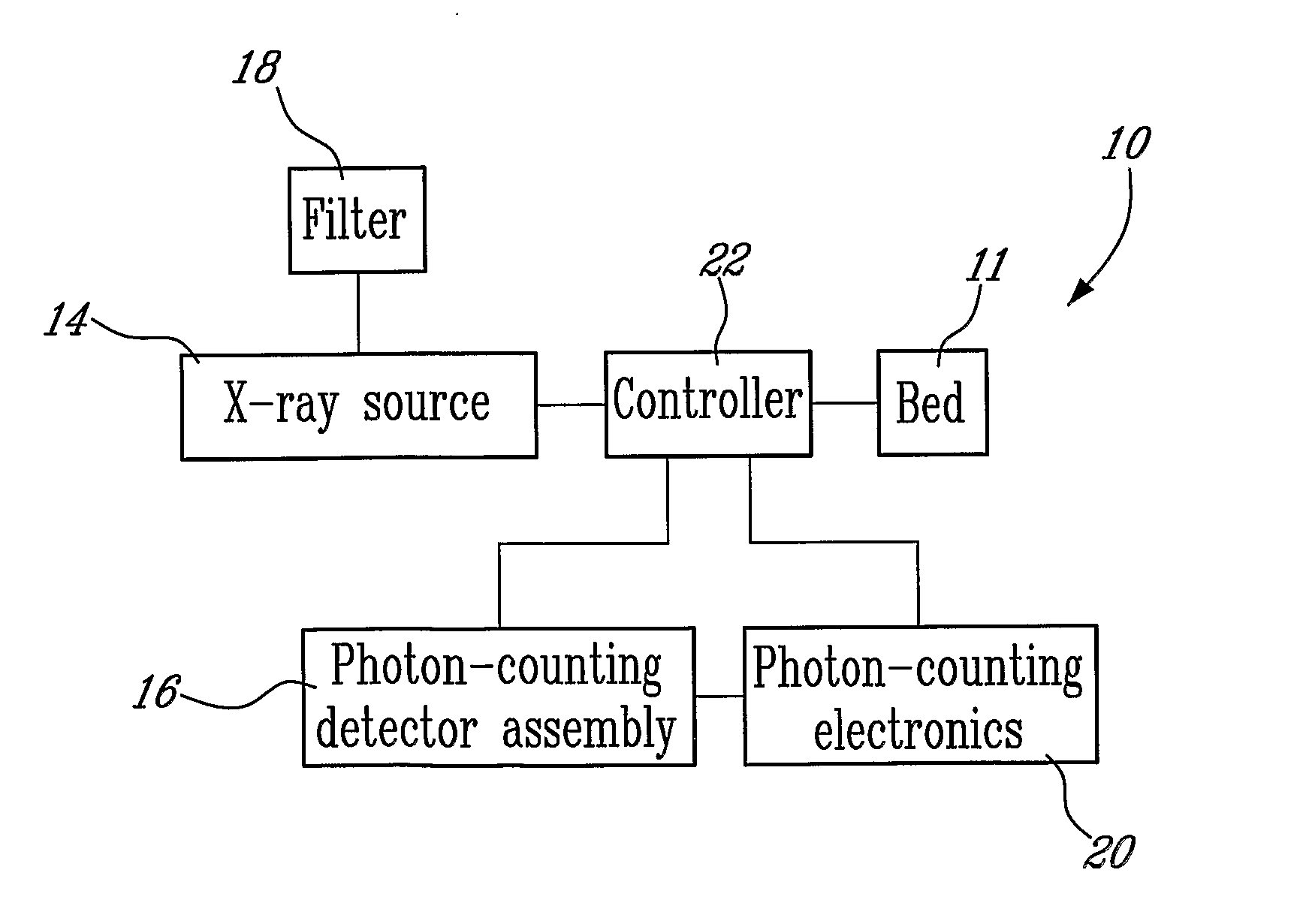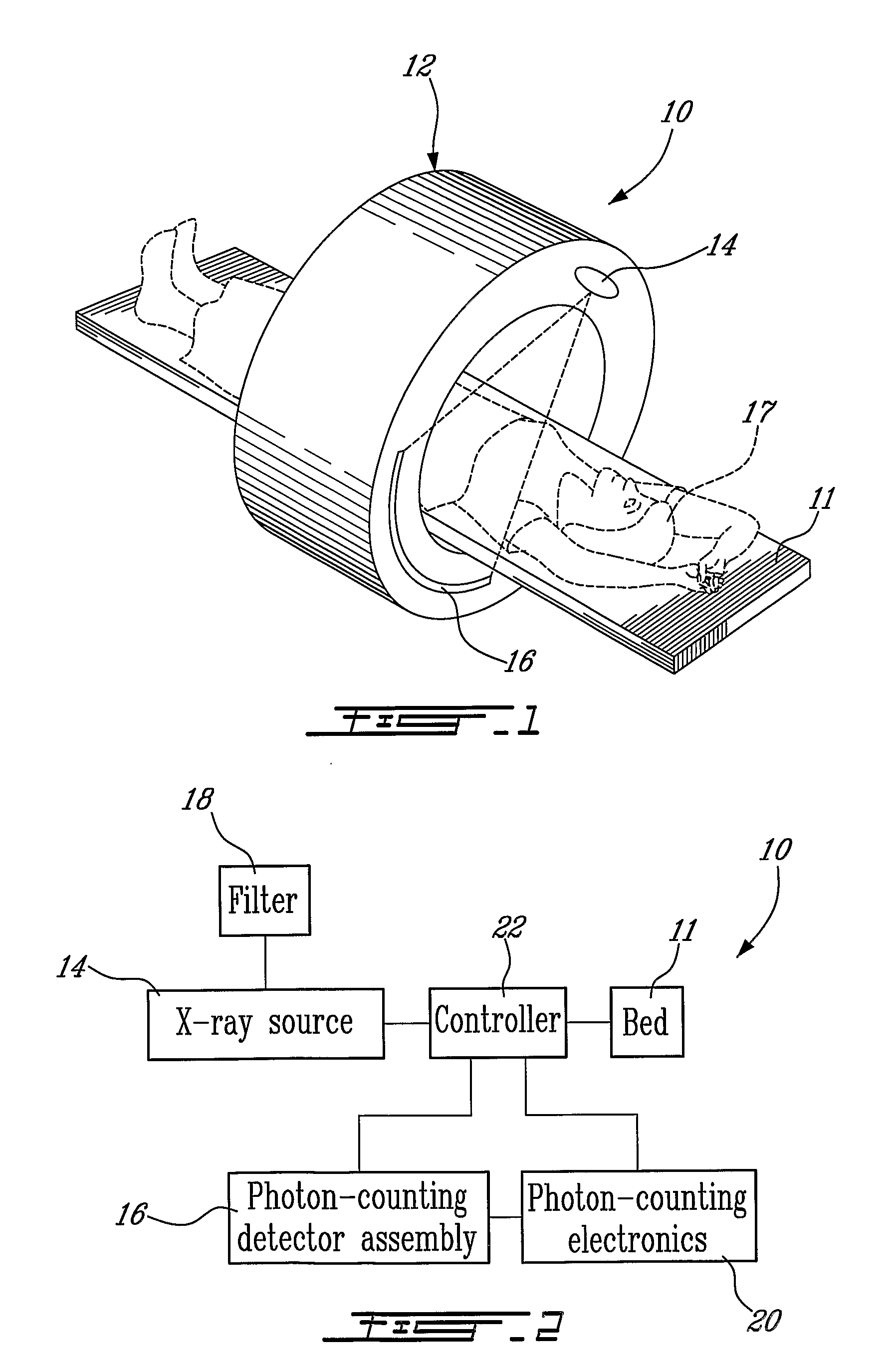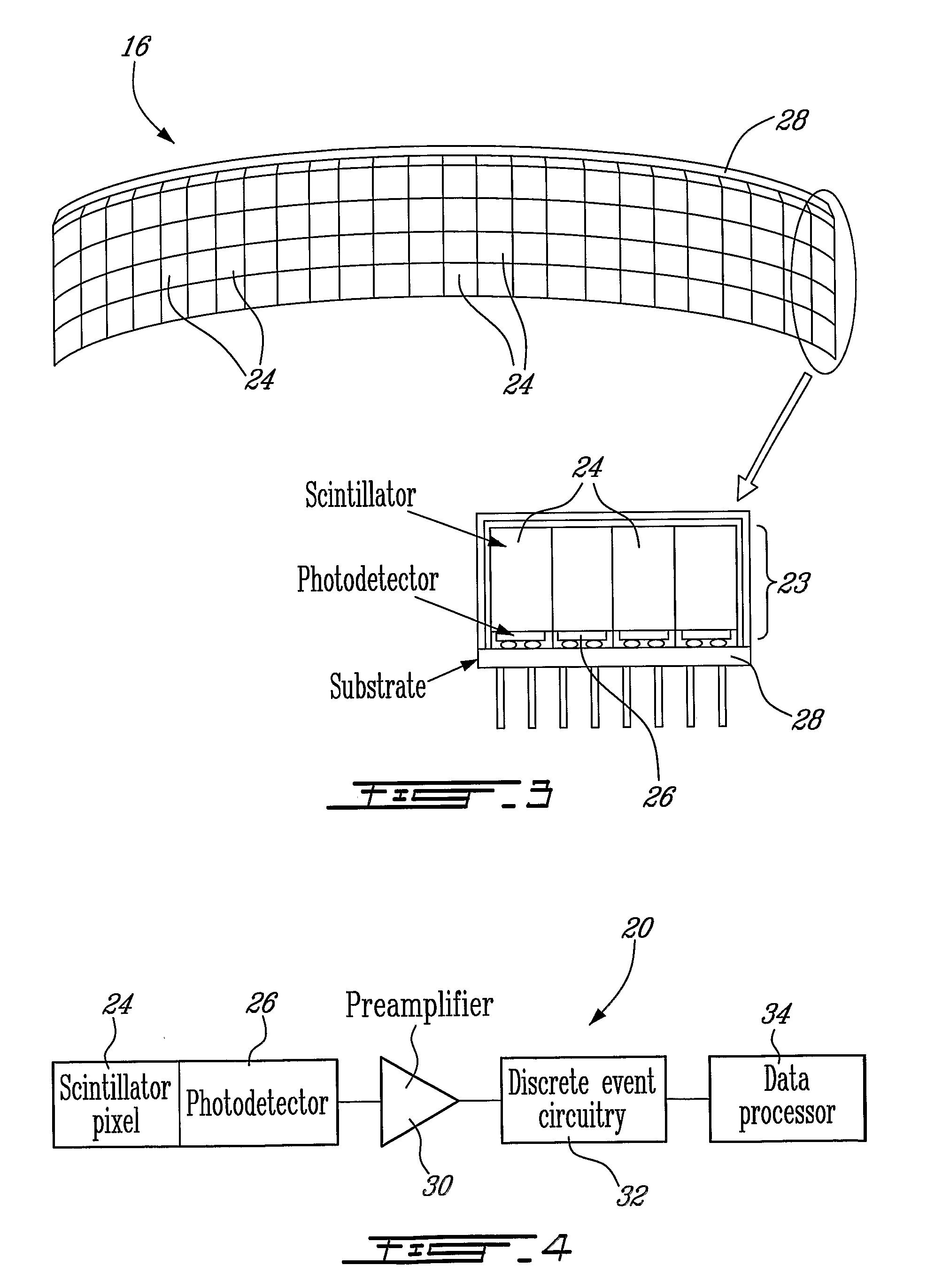Method and System for Low Radiation Computed Tomography
a computed tomography and low radiation technology, applied in tomography, instruments, applications, etc., can solve the problems of reducing contrast, affecting diagnostic accuracy, and lesions that are more difficult to detect, so as to reduce the effect of beam hardening and improving soft tissue differentiation
- Summary
- Abstract
- Description
- Claims
- Application Information
AI Technical Summary
Benefits of technology
Problems solved by technology
Method used
Image
Examples
Embodiment Construction
[0042]A system 10 for low radiation computed tomography according to an illustrative embodiment of the present invention will now be described with reference to FIGS. 1-2.
[0043]The system 10 comprises a subject-receiving area in the form of a bed 11 and an enclosure 12 partially surrounding the bed 11 containing a low energy radiation source, in the form of an X-ray source 14, and a detector assembly 16.
[0044]The enclosure 12 is generally in the form of a cylinder positioned about the bed 11 defining a tunnel therein. The X-ray source 14, is for example an X-ray tube mounted in the enclosure 12 so as to project a low energy radiation beam towards the radiation detector array 16 after passage through the patient 17.
[0045]The X-ray tube 14 may be for example of the microfocus or microfocus rod X-ray tube type.
[0046]Other types of X-ray sources including without limitations rotating targets and dual spots can also be used.
[0047]The detector assembly 16 is located in the enclosure oppos...
PUM
 Login to View More
Login to View More Abstract
Description
Claims
Application Information
 Login to View More
Login to View More - R&D
- Intellectual Property
- Life Sciences
- Materials
- Tech Scout
- Unparalleled Data Quality
- Higher Quality Content
- 60% Fewer Hallucinations
Browse by: Latest US Patents, China's latest patents, Technical Efficacy Thesaurus, Application Domain, Technology Topic, Popular Technical Reports.
© 2025 PatSnap. All rights reserved.Legal|Privacy policy|Modern Slavery Act Transparency Statement|Sitemap|About US| Contact US: help@patsnap.com



